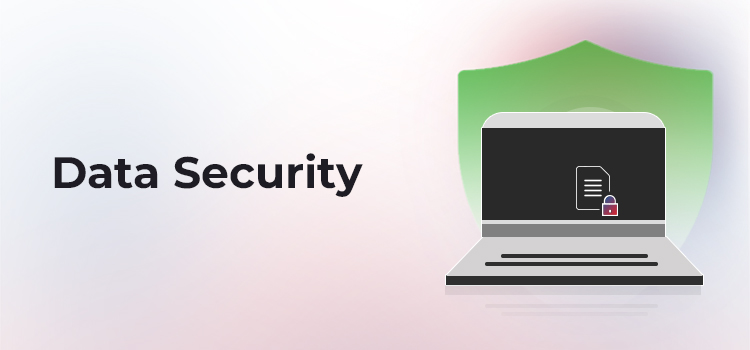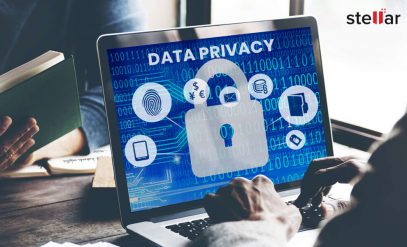Summary: Data security is paramount because it protects sensitive information, such as customer data and trade secrets, from cybercriminals. However, as cyberattacks rise, businesses must understand the common threats and implement strong security practices. Also, in case of data loss due to intrusion, a business can seek help from data recovery services to restore critical information and ensure business continuity.
As our dependence on digital communication has grown, there has been an alarming surge in cyberattacks. According to a recent Forbes article, there were over 2,300 major cyberattacks in 2023, and the personal information of 343 million people was stolen. This was a 72% rise over 2021, and there is no immediate sign that it will reduce.
With an escalating number of cyber threats, every business owner must understand the fundamentals of data security to reduce the risk of data breaches. This article provides an in-depth look at data security and the best practices for securing sensitive data.
What is Data Security?
Data Security refers to a set of practices, tools, and policies designed to help protect important data from unauthorized access.

Data security is vital for the following reasons:
- Protection of privacy.
- Maintaining customer trust.
- Ensuring regulatory compliance.
We must protect data at every stage of the data life cycle —acquisition, storage, processing, usage, and disposal.
By implementing proper data security measures, a business can minimize the risk of data falling into the wrong hands. In the following section, we shall examine the common types of threats and countermeasures that can be adopted.
Common Threats to Data Security
Organizations face multiple threats to data security. Understanding these threats and developing effective defense strategies is crucial.
- Malware: Malware comprises malicious software or code that can compromise a device’s normal use. Malicious software can disrupt computer systems, damage data, or gain unauthorized access. Malware can infect devices through email attachments and infected files.
- Social Engineering: This approach uses psychology to manipulate people into accessing restricted data. Attackers create a sense of fear and urgency, which leads the victim to act quickly and without much thought into divulging passwords and bypassing two-factor authentication systems.
- SQL Injection: This consists of an external threat that inserts special characters into user input and manipulates SQL code. It can lead to unauthorized access to databases and theft of sensitive data.
- Shadow IT: The unauthorized use of unapproved applications or internet services in the workplace is one of the leading causes of privacy breaches. Examples include using personal email for work purposes, accessing random websites, and troubleshooting tech issues without approval from tech support staff.
- Advanced Persistent Threats (APTs): APTs are the most dreaded cyberattack. It is a covert cyberattack that gains access but remains undetected for a long time. The goal of APT is to wait for the most opportune moment to inflict maximum damage on a computer system.
Given these growing threats, it’s essential to be aware of real-world examples. Some real-world facts about data security breaches highlight the severity of these risks and underscore the importance of implementing effective defense strategies. These breaches not only cause significant financial losses but also damage trust and reputation.
Data Security Best Practices
To protect sensitive information, you must adopt a proactive approach to cyber security. Here are the key best practices for organizations to secure sensitive information.
1. Establish a Comprehensive Data Inventory
The starting point for an effective data security strategy is thoroughly cataloging all data within an organization. You must build a complete data inventory with a list of all data sources, types, storage locations, and personnel who supervise it. This is a continuous process since data grows over time.
2. Monitor Data Access and Usage Patterns
The next step is understanding how, where, and by whom data is accessed and used. For example, the factory floor supervisor needs access to inventory, suppliers, and logistical information but does not need to know the projected cash flow for the next quarter. There have to be information silos and employees should only have access to specific data that supports their task.
3. Implement Data Masking Techniques
Data masking is a process of creating a fictitious version of sensitive data with the same structure. Such as using a fake database of synthetic data for development, testing, or training. Although masked data is not genuine, it has the same format and internal structure as the original.
4. Encrypt Data to Safeguard Information
Data encryption is the most reliable method for securing data. It scrambles data into a secret code that can only be unlocked with a unique digital key. Once used only by the military, data encryption is common with almost every modern computer capable of using BitLocker, a free encryption service available in Windows 10/11.
5. Strengthen Access Control Mechanisms
You have to set up procedures that restrict data access without proper checks. Only authorized personnel can view or modify data necessary for their roles. Traditional user verification methods, like passwords, are deemed too weak for data protection. Using biometric scans, or at least two-factor authentication (2FA), is better to confirm identity.
6. Define Data Collection and Retention Policies
A good data security strategy also involves getting rid of sensitive data that is no longer required. Well-defined data collection and retention policies must be in line with the regulatory framework. Limit data collection to what is necessary, store it securely, and discard it as soon as feasible. There is considerable cost associated with cyber security, and the more you store, the higher the cost climbs.
7. Implement Data Loss Prevention Measures
Data loss prevention (DLP) technologies use a combination of tools, processes, and people to detect and prevent data breaches. DLP technologies can include:
- Antivirus software
- Firewall
- Intrusion detection systems
- Network traffic analysis
Together, these protect confidential business information and personally identifiable information from falling into the wrong hands.
8. Conduct Regular Security Awareness Training
Humans are the weakest link in this chain, and someone casually inserting a USB drive into a work machine can wreak havoc. That is exactly how the United States carried out the famed Stuxnet attack against Iran’s nuclear program in 2010. Train your employees using the best available resources to understand the significance of data security.
Hackers not only steal information but also damage databases, posing an existential threat to business continuity. When critical files vanish, businesses experience disruptions and, ultimately, financial losses.
While it is important to maintain data security, it is equally vital to keep the business up and running if data has been lost, damaged, or deleted. In the event of data loss, recovery software or services can help restore business continuity. Stellar Data Recovery offers both software solutions and expert services to recover data from various situations.
A Reliable Solution for Data Loss
We offer a wide range of solutions for data recovery. Stellar Data Recovery Software is perfect for users needing a convenient, software-based option to recover data. It has an easy-to-use UI and can recover hundreds of file types.
However, some data loss scenarios require more advanced intervention. Stellar Data Recovery Services caters to more complex cases, such as when physical damage to a hard drive or severe corruption is involved. Common cases we handle include:
- ATA/SATA Hard Drive Not Detected in BIOS
- Internal Hard Drive Not Detected
- Facing Dell Hard Drive Error 2000-0142
- Seagate External Hard Drive Not Showing Up on Windows 11
- Internal Hard Disk Detected But Not Accessible
Our experts can easily recover data from broken RAID setups and non-bootable drives.
We are trusted globally, and our service comes with a data privacy assurance. If you need more help, please contact us 24×7.
Now let’s answer a few queries about data security. If you want to know more or have a question, please email us or comment below.
FAQs
1. What is Privacy by Design in IT systems?
Privacy by Design is a proactive approach to data security where privacy is built into the design of IT systems from the start. This maximizes data privacy throughout the lifecycle and minimizes the risks of data breaches.
2. How does Endpoint Protection differ from Antivirus?
Endpoint protection has a broader scope compared to antivirus software. The purpose of endpoint protection is to protect all connected devices across a network. On the other hand, antivirus software protects individual devices, such as a laptop or a smart device.
3. What is BitLocker and how does it work?
BitLocker is a Windows security feature and it encrypts a device’s entire drive. This makes it very safe since the BitLocker key is 48 digits long and it is impossible to open it with a brute force attack.







